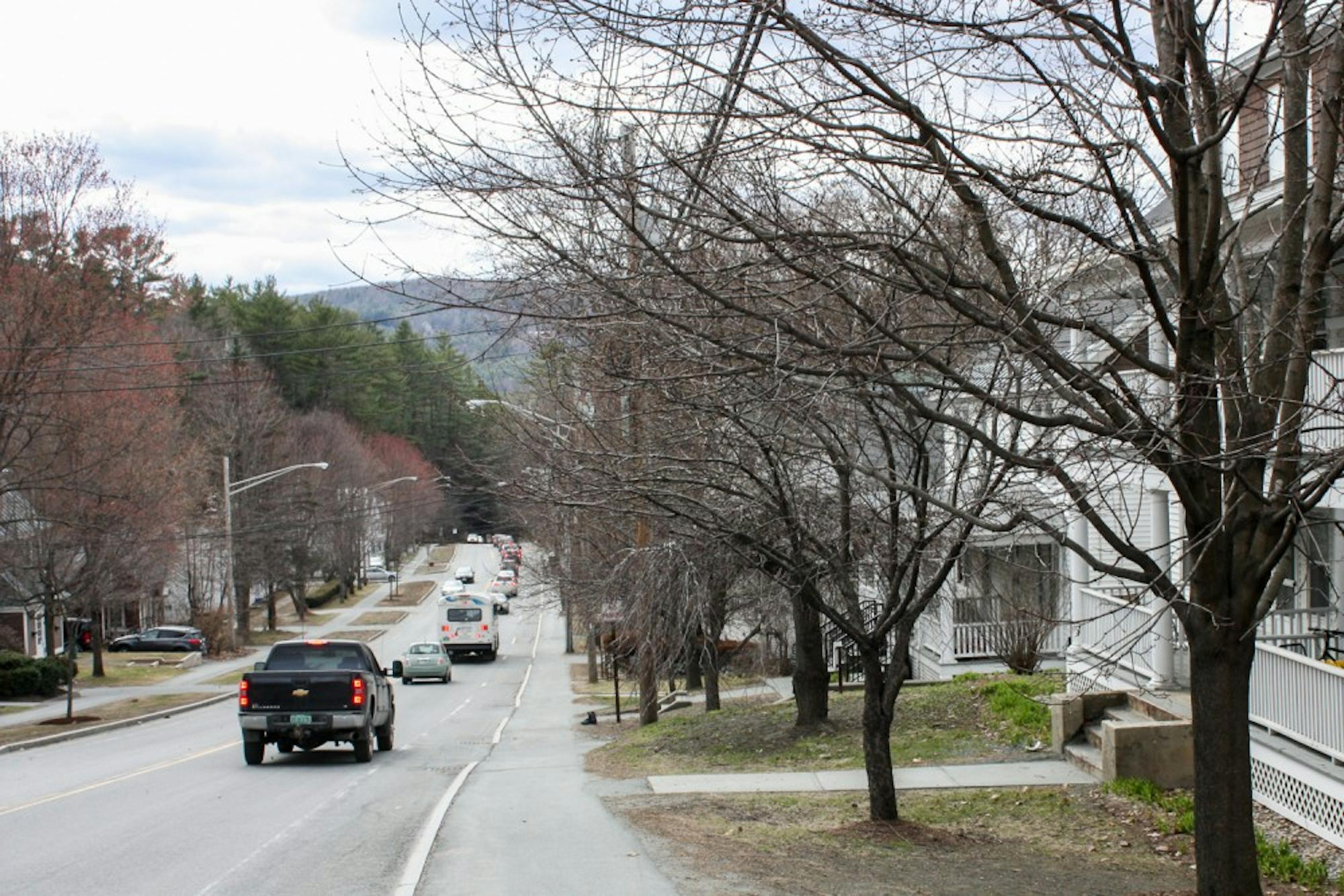West Wheelock Street could play host to a denser, more walkable neighborhood of residential space if a zoning ordinance is approved at Hanover’s town meeting next month, town officials said.
The proposed change to the zoning ordinance would replace the current general residence zoning with the “West Wheelock Gateway District” — a denser neighborhood with easy access to both downtown Hanover and Dartmouth’s campus, according to Hanover planning documents.
“The whole point of doing the new district is to allow increased density to provide an incentive for people to reinvest in their properties and to redevelop their properties,” Hanover’s senior planner Vicki Smith said. “It’s really up to landowners to decide if they want to do that.”
The gateway district, which is set to run from the entrance of Tuck Drive near the Ledyard Bridge up to School Street, is currently inhabited by many undergraduates, graduate students, Dartmouth faculty and College staff, Griffin said. The Upper Valley is currently experiencing a housing shortage, which “is particularly acute in Hanover,” Smith said. If private owners in the new district redevelop their property, more housing could be provided, she said.
Buildings of up to four stories would be permitted if the ordinance passes at the town meeting on May 12. The ordinance would also permit the addition of a restaurant, a laundromat and a retail store in the area for the convenience of residents, according to meeting documents.
“When you drive up that corridor, you see a fair number of fairly old buildings, many of which have reached the end of their useful life, and given its proximity to campus, we’ve often thought we could, as a community, make better use of the residential opportunities in that corridor and spiff it up at the same time,” Hanover town manager Julia Griffin said.
Smith declined to speculate on the likelihood of the zoning ordinance amendment’s passage at the town meeting.
“I’m a planner, I’m not a fortune teller, so I don’t do betting,” she said.
Hanover planning board chair Judith Esmay said that increased development of the downtown area is conducive to the desire of many residents to be able to walk rather than drive including Dartmouth-affiliated residents of the West Wheelock area.
Additionally, current zoning bylaws impede Hanover from addressing its housing needs issues with increased rural development since they require larger lots in the town’s rural fringe, Esmay said.
Any new housing built in the area would be within walking distance of both the College and downtown Hanover, which could also allow modifications of current parking restrictions, Griffin said.
“We’re looking to reduce the parking requirements somewhat because our experience in this corridor now is that many of the folks who live in this corridor are undergraduate students or graduate students or faculty and staff who walk to campus every day,” Griffin said.
Another major goal of the proposed change is the regulation of traffic flow from the Ledyard Bridge into downtown Hanover and vice versa, Griffin said.
“We’re hoping to enhance the smooth flow of traffic through that corridor because we get a lot of bottlenecks,” she said.
While the development of new housing or retail space could take a number of years to come to fruition, the town intends to begin working with the College and other abutters to handle traffic issues in the near future if the ordinance amendment passes at town meeting, Griffin said.
Esmay said that slowing the speed of traffic was a major goal for the neighborhood.
In addition to the zoning ordinance amendment that will appear at the May meeting, some modifications will also be made to Hanover’s site plan regulations, changes that the planning board is empowered to make after holding public hearings, Griffin said.
The idea for the West Wheelock Gateway District was first broached in 2003 as part of the Hanover town master plan, which called for increased housing density in the area, Smith said. More recently, Hanover applied and was selected to be one of about a half dozen communities each year to receive a design charrette — an intense period of design or planning activity — hosted by Plan New Hampshire, a statewide group that assists municipalities with planning issues, Griffin said. Planners, architects, traffic engineers, local residents and others came together through Plan New Hampshire to create a concept for the new district, Griffin said.
“It’s a neat way to get professional expertise when you’re looking at tackling something in your community that you’d like to overhaul,” she said.
Thereafter, the West Wheelock Working Group formed to bring together interested parties to create a proposal for the zoning ordinance amendment, Griffin said. The group involved planners, architects and affordable housing specialists, in addition to residents and College planners, she said. Dartmouth personnel were closely involved in the process due to the College’s ownership of numerous properties along West Wheelock Street, Esmay said.
“Most of the properties along the north side, which would be properties abutting the campus, are owned by Dartmouth College,” she said.




